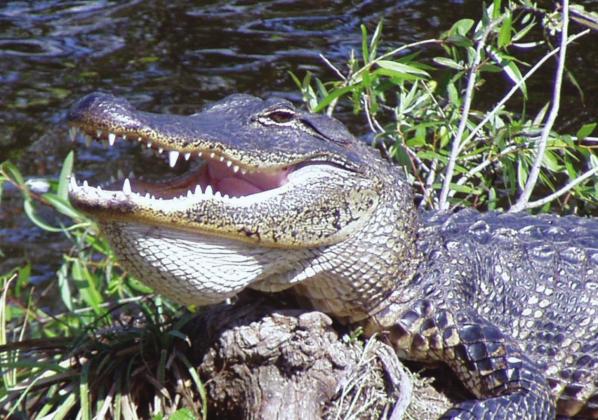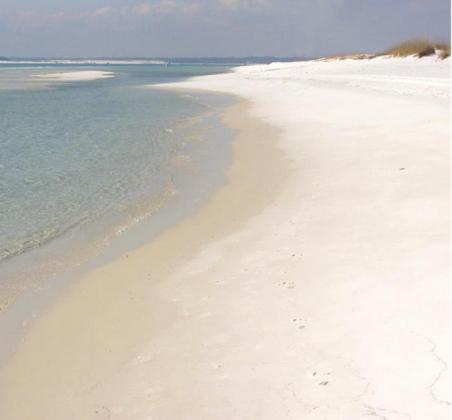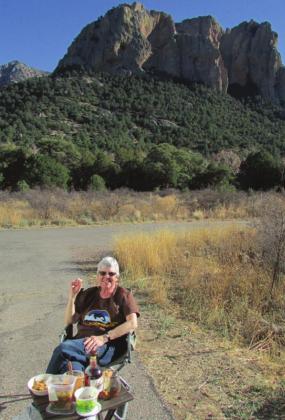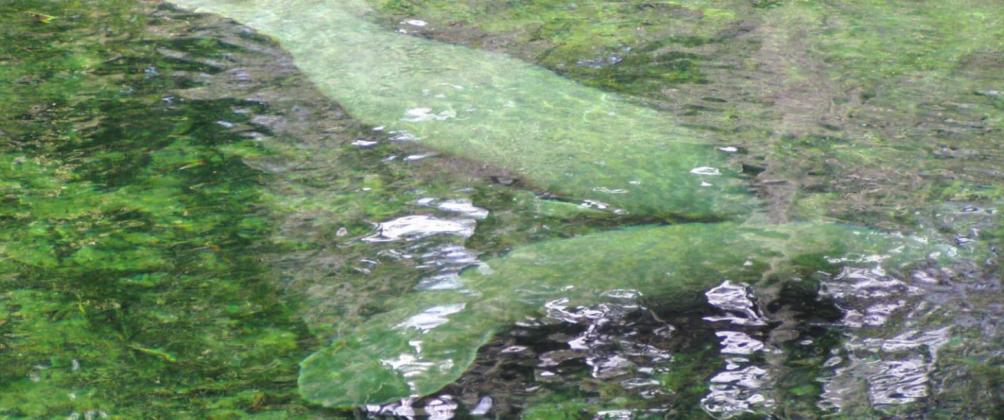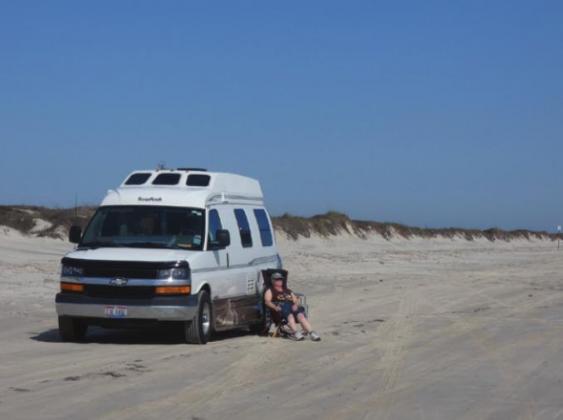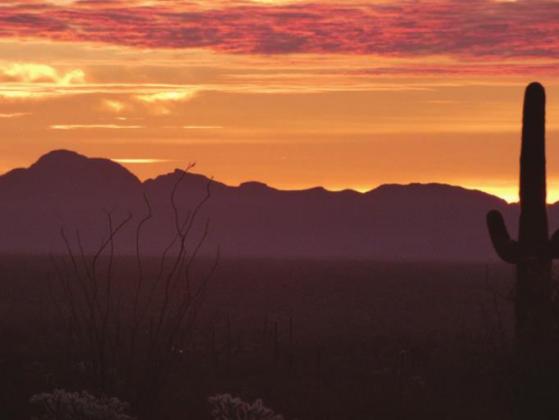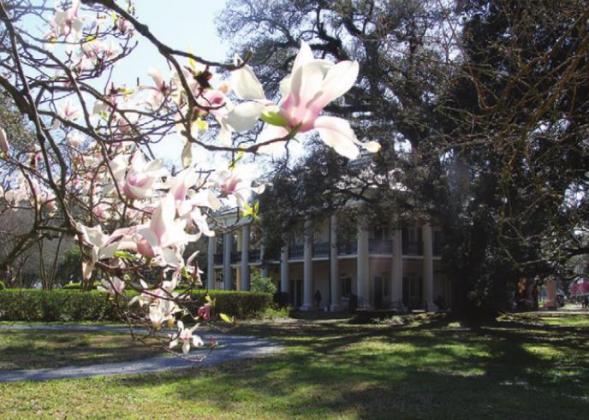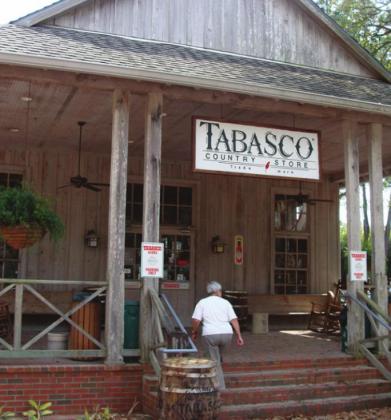LAST APRIL I WROTE ABOUT the challenges of RVing with a focus on the mechanical and personal issues: learning to operate and maintain onboard systems and getting buy-in from a reluctant spouse. In 2021 Shirley and I became increasingly aware of numerous unfortunate consequences of COVID that may not yet have occurred to the huge number of new or potential RVers.
Because RVing combines personal freedom with social distancing, it is attractive to people who still have not fully recovered from COVID cabin fever. Or fear that new variants could lead to yet another lockdown. The record growth in RV sales means there are a lot of first-timers struggling with the usual learning curve combined with COVID complications (so to speak) that caught even veterans off guard.
One of the biggest complications is that reservations are now required at places where once you could just show up and get a campsite. This means you now have to decide, often several months in advance, exactly when you are going to arrive and depart. I am reluctant to make those decisions so far ahead because flexibility goes right out the window. Shirley says that, like all persons afflicted with a Y chromosome, it’s just fear of commitment.
For decades we were accustomed to traveling with an itinerary but not necessarily a schedule. If we liked where we were, we extended our stay. If the forecast called for extended rain, we could head on down the road. If fellow RVers recommended a place, we could make a little detour to check it out. Places we had never heard of are now among the favorites we return to repeatedly.
Pre-COVID, I might call ahead to especially popular national parks and ask, “What are the chances of getting a site if we arrive by 4:00?” Today, the person answering, even if a recording, says, “You need to log on to recreation.gov to see what’s available and make reservations.”
There is no actual person at recreation.gov. An algorithm tracks the availability of sites. While we were still in Arizona last winter, Shirley suggested we go to the Tetons and Yellowstone in the summer. Knowing how busy those parks are, she hoped that six months ahead of the season there might be sites available. The algorithm said, “Nah, you don’t really want to go there.” Truthfully, there were several sites available—for one night each only on widely scattered dates. Availability was way down not only because demand wasup, but also because eight of the 12 campgrounds were closed. Mammoth Campground, which used to be totally non-reservable, was converted to reservations-only. Years from now we may look back and laugh.
When the kids and grandkids leave after Christmas, our objective is to get as far south as quickly as we can. In recent years, it has taken a couple days to reach the Fort Pickens Campground at Gulf Islands National Seashore, a couple long bridges from Pensacola.
We typically spend a week or so adjusting to the warmth and sunshine. It’s rough, but, as seasoned travelers, we have learned to cope. Then we proceed around the Gulf to Padre Island near Corpus Christi, TX. During the government shutdown in 2019, Malaquite Campground was closed, so we parked right on the hard-packed sand beach and quickly discovered that we actually preferred camping on the beach. So we repeated that in ’21. (In 2020, a little medical procedure and then COVID rules kept us homelike everyone else.)
The plan in ‘21 was to continue from Padre to Big Bend National Park, so we checked rec.gov for reservations. Park closed by two feet of snow. No snow plows because they never need those things at Big Bend. That really didn’t matter. There were no sites available anyway.
So, after a night at a Cracker Barrel in El Paso, we took Rt. 9 that runs parallel to the border across southern New Mexico. There are marvelous state parks in New Mexico. The governor closed all of them to camping. Day visits were permitted from Thursday to Sunday for state residents only. (Science had clearly established that the virus is much less virulent on weekends.) It is a straight shot from El Paso to Cave Creek Canyon near Rodeo, AZ. Cave Creek is one of those places we had never heard of until fellow RVers recommended it a few years ago. Shirley checked the weather forecast. Holy $#!@! The same massive cold front that struck Big Bend had produced freezing temps with horrendous wind chills at Cave Creek.
But flexibility was built in, so we continued to our next stop, Whitewater Draw Wildlife Refuge. No reservations needed because, though there is no campground, you are allowed to park your rig for a couple of nights to admire the 20 or 30,000 sandhill cranes and other migratory birds.
Meanwhile, Shirley had done two brilliant things. She managed somehow to finagle reservations for three nights, all they had, at Gilbert Ray, our favorite campground at Tucson. (It is very close to Saguaro National Park, one of the few that have no campground.) They handled the COVID challenge by putting our registration papers outside in a box so no human interaction was required.
Her next brilliant move was to call Vicki and Jeff, friends and long-time volunteers at Organ Pipe Cactus National Monument. We had reservations there but were two weeks ahead of schedule because of those stops where we didn’t stop. Vicki promised to see what she could do. It pays to have personal connections when recreation.gov won’t even talk to you.
When we arrived, there was a brief explanation of the park’s COVID rules. First, half of the 208 sites were closed—every other row. So, you could park with other campers to your right or left but not in front or back. This was based on the science that the virus travels readily north to south but not east to west. Also, though six feet of social distancing was sufficient at Walmart, 60 feet in a campground was still kind of iffy.
Second, the even-numbered restrooms were open on even-numbered days and the odds on odd days. None of the restrooms have ever had numbers on them, but we figured out which was which by pushing on doors. In theory, on alternating days they would be closed, thoroughly sanitized, and allowed to air out for 24 hours before reopening. In theory. The person who came up with the theory should have consulted a calendar. What number does January end on? And what number does February begin on? But let’s not make a fuss. Only obsessive-compulsive people insist on taking theories literally. Come to think of it, though, the most common symptom of obsessive-compulsive disorder is excessive handwashing. So, as of 2020, the entire population of the US got a diagnosis of OCD.
It didn’t really matter anyway because they never adhered to the sanitizing schedule. Restrooms that had been closed the day before were cleaned and opened at some random point between 7:00 a.m. and 11:00 on the next day. No 24 hours for the supposedly critical airing out. Nobody objected to this.
Except, perhaps, the naïve, newly arrived campers who scurried over for their morning ablutions to which ever restroom they guessed might be open. When they found it locked because it had not been cleaned yet, they would begin that little dance you learned in kindergarten. You know, the one that includes pressing knees together, wiggling around, and frantically waving two fingers overhead. Followed by fervently praying they could make it as far as an open facility without further embarrassment. Also praying there were not already nine or ten people ahead of them lined up for access.
All the showers were closed for the entire season. This was no big deal for RVers accustomed to bathing in their rig. So, you might ask, why not just use your own toilet as well. I can’t speak for all RVers, but some of us have a rule: only number one, never number two. The more stuff you put in, the more stuff you have to let out at the sanitary dump. We have never met an RVer who thought using the dump was the highlight of the trip. Tenters, of course, didn’t have to worry about using the dump station. Ah, the simple life.
Please note that park volunteers, like all people at the bottom of the organizational pyramid, are not responsible for the policies invented way above them. Even so, they are the ones who interface directly with park visitors, not all of whom are patient and understanding. Volunteer camp hosts make enormous contributions to the quality of the experience at every national park and save the Park Service hundreds of millions of dollars every year by not demanding a livable wage. They are volunteers because they love the parks, enjoy working with people, and have had successful careers so they can afford to work for free. We commiserate with them because they are responsible for implementing the policies of those who may never have actually been in the campground. As Shirley always says, “Nothing is impossible for the person who doesn’t have to do it.”
But the biggest challenge of all for us in 2022 is the dramatically deteriorated condition on the southern border. Organ Pipe Cactus National Monument, so lovingly described above, is 153 miles due south of Phoenix right smack on the border. One of our favorite trails climbs a ridge from which you can see the Mexican town of Sonoyta. There is a major Border Patrol station a few miles north of Organ Pipe in Why, AZ, so we have never felt uneasy or threatened. The main functions of agents used to be tracking down drug runners and rescuing migrants who had been assured by the cartel that they could walk all the way to Phoenix on a gallon of water. Today, the main function of BP agents is to put migrants on buses to widely scattered places around the country. In whatever time they have left, they try to catch some of the drug runners who have moved on from marijuana to fentanyl.
Our favorite Arizona places include the wildlife refuges at Whitewater Draw, Las Cienegas, and Buenos Aires. They are all what our friend Bill has described as “remote, even desolate.” Bill and Sandy are very social and prefer the opportunities for golf, pickle ball, fine dining, movies, and live concerts in Phoenix. Shirley and I place a higher value on quiet solitude and the prospect that our camp visitors are more likely to be wildlife or cows than people.
At least that was the case until this year. With a couple million people overwhelming the border, there is no telling who might wander into a remote camp. As we were leaving Las Cienegas last year, 20 BP trucks and SUVs came roaring in and disgorged a battalion of agents. Their body language suggested they were not just getting together for coffee and donuts. Something interesting was afoot, but we didn’t stop to ask. Statistically, most migrants are probably harmless, but there has been an enormous increase in drug smuggling and human trafficking. You may have heard that some of those involved can be unpleasant. We don’t think of ourselves as timid campers (Shirley walks ahead of me to kick rattlesnakes off the trail), but there is a certain level of risk we are not prepared to assume. So, we are really, really going to miss Arizona this year. Really.
By the time you read this, we will be in Florida. Yes, I can hear what you are thinking. Why must life be so hard? Non-campers are also flocking to Florida again. Increased tourism makes hotel rooms more expensive and harder to book. The 50th anniversary of Disney World means the lines for rides and attractions will be longer there and at other theme parks. Fortunately, we have considerable experience in Florida so we know not only which campgrounds but the specific sites we prefer. We will be working our way to southern Florida before returning via Fort Pickens and Cajun Country and then up the Natchez Trace. Shirley lacks that fatal Y chromosome, so she did not hesitate to make commitments and get the necessary reservations. There are even secret boondocking places where we might find some quiet solitude. Though there are a few more challenges this year, traveling with her continues to be just a walk in the park.
LeMoyne Mercer is the travel editor for Healthy Living News. If you are contemplating a trip, you might want to see photos of numerous destinations on AnotherWalkinthePark.blogspot.com.

